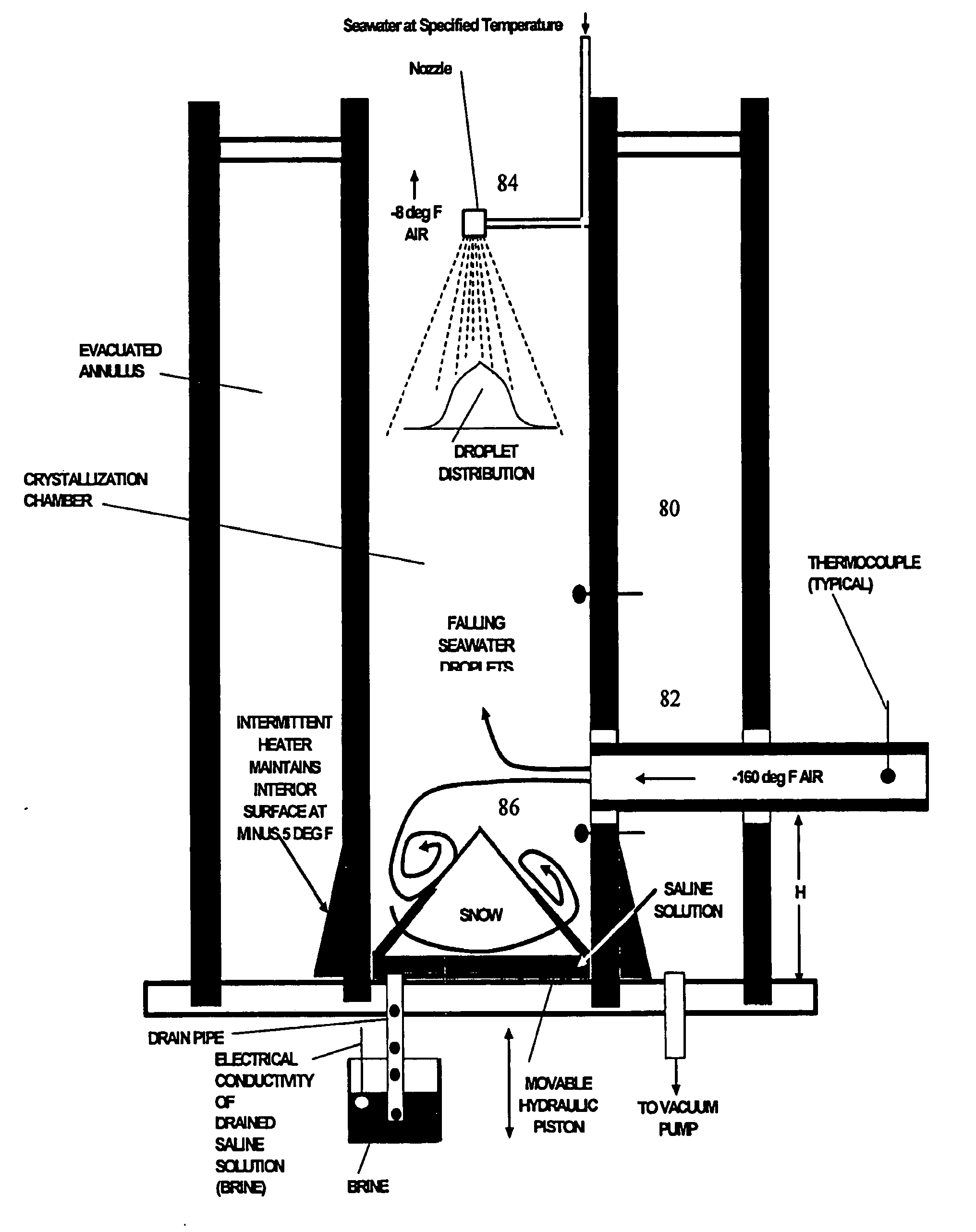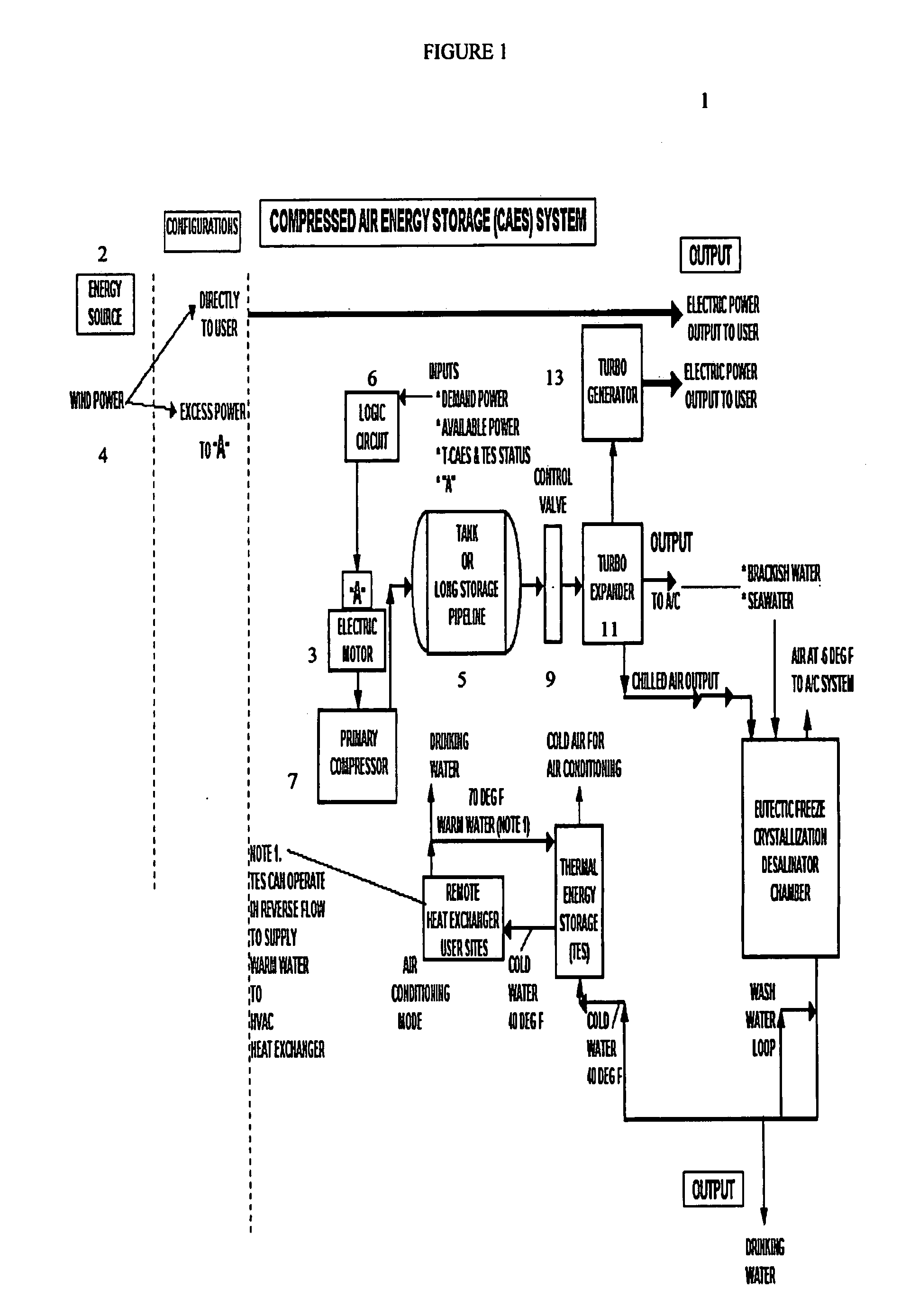Desalination Method and System Using Compressed Air Energy Systems
a technology of compressed air and energy systems, applied in the field of desalination systems, can solve the problems of insufficient amount of fresh drinking water available, inconvenient or possible transportation of water, and insufficient supply of fresh drinking water, etc., and achieve the effect of reducing the temperature of seawater
- Summary
- Abstract
- Description
- Claims
- Application Information
AI Technical Summary
Benefits of technology
Problems solved by technology
Method used
Image
Examples
Embodiment Construction
[0090]The freeze crystallization method of desalinating water discussed above requires a cooling system to freeze the seawater which is needed to separate the pure water from the impurities in the seawater. The present invention uniquely incorporates the use of compressed air energy technology as a means of co-producing chilled air as a by-product, wherein a turbo expander can be used to release and expand compressed air energy, to produce a suitable amount of chilled air for desalination purposes.
A. Compressed Air Energy Systems:
[0091]The present invention preferably contemplates using one of at least three different methods of producing chilled air, including (1) a compressed air energy storage system having a compressor and a large high pressure storage tank, wherein a turbo expander is used to release and expand the compressed air energy when it is needed, wherein the energy can be converted into chilled air and / or electrical energy, (2) a turbo expander having the dual capacity...
PUM
| Property | Measurement | Unit |
|---|---|---|
| time | aaaaa | aaaaa |
| freezing point | aaaaa | aaaaa |
| freezing point | aaaaa | aaaaa |
Abstract
Description
Claims
Application Information
 Login to View More
Login to View More - R&D
- Intellectual Property
- Life Sciences
- Materials
- Tech Scout
- Unparalleled Data Quality
- Higher Quality Content
- 60% Fewer Hallucinations
Browse by: Latest US Patents, China's latest patents, Technical Efficacy Thesaurus, Application Domain, Technology Topic, Popular Technical Reports.
© 2025 PatSnap. All rights reserved.Legal|Privacy policy|Modern Slavery Act Transparency Statement|Sitemap|About US| Contact US: help@patsnap.com



